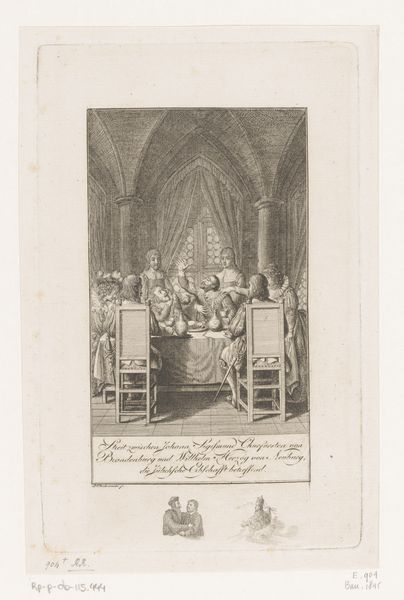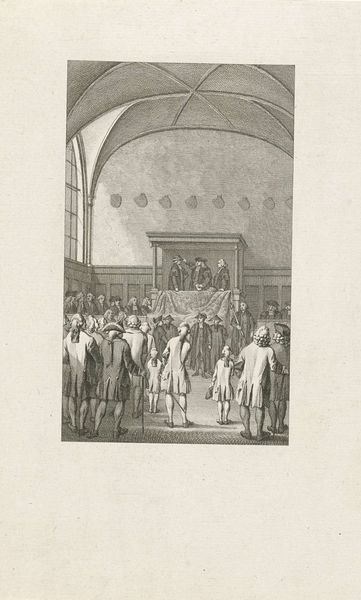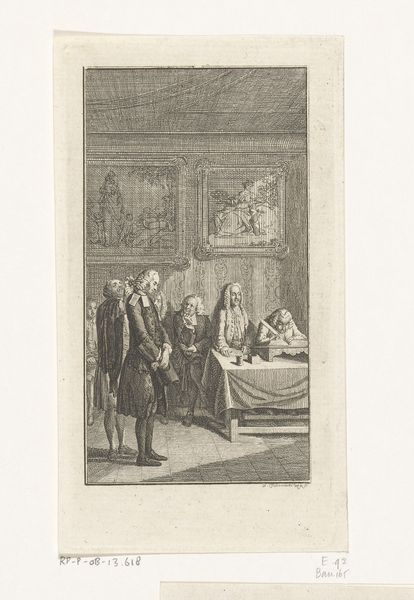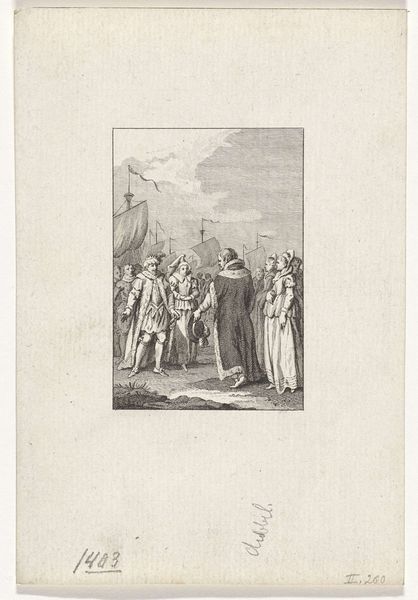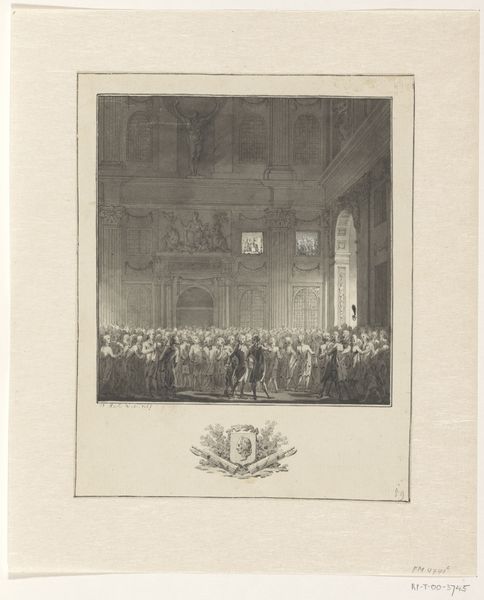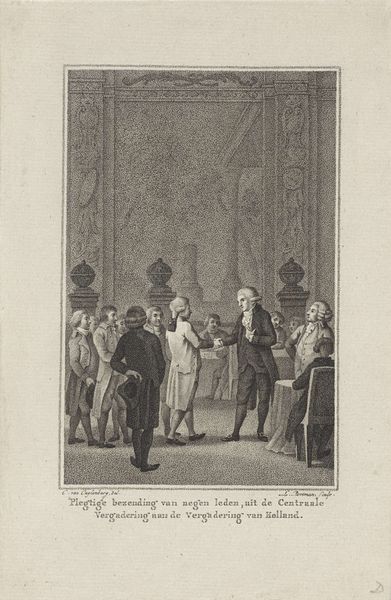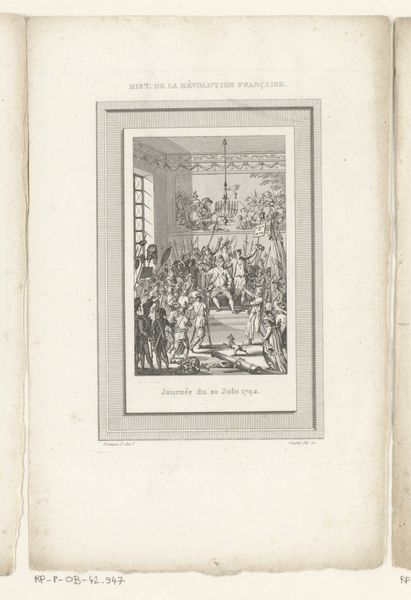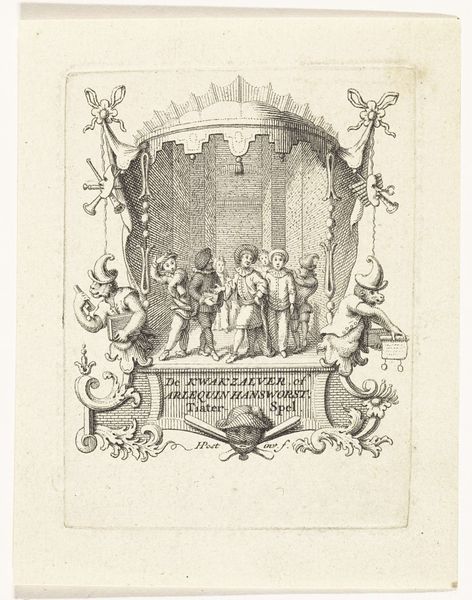
Friedrich I wordt voorgesteld door de hertog van Schomberg 1799
0:00
0:00
danielnikolauschodowiecki
Rijksmuseum
Dimensions: height 176 mm, width 112 mm
Copyright: Rijks Museum: Open Domain
Editor: This is Daniel Nikolaus Chodowiecki's 1799 engraving, "Friedrich I wordt voorgesteld door de hertog van Schomberg", housed here at the Rijksmuseum. The scene feels very staged, formal even, but the medium is almost… humble? What should we be looking for here? Curator: Note how Chodowiecki utilizes printmaking, a method accessible to a wider populace, to portray a scene of aristocratic presentation. The labor involved in producing multiple copies collapses the exclusivity often associated with portraiture. Think about the socio-economic context: prints democratized images, spreading narratives beyond the elite. What implications might that have in 1799? Editor: That's fascinating. So the act of mass production changes the reading of the scene itself. Is he commenting on the Duke by choosing to depict him in such a way, via an engraving? Curator: Precisely! Consider the materiality: the lines etched into the plate, the pressure of the press, the inexpensive paper. It’s not just *what* is depicted, but *how* it’s distributed and consumed. We often prioritize painting and sculpture, but shouldn't we look at this through the same lens, considering the labor involved and its social circulation? It wasn't a canvas painted for one wealthy patron. Editor: I see! So it’s about looking at who has access and how this image functions in society beyond just aesthetics or historical record. Curator: Absolutely! Considering how such a process reframes traditional notions of high art, class, and power through accessible material production. Editor: That gives me so much to think about regarding this piece, thank you. Curator: My pleasure. Now consider this approach for works across all media, not just engravings.
Comments
No comments
Be the first to comment and join the conversation on the ultimate creative platform.
